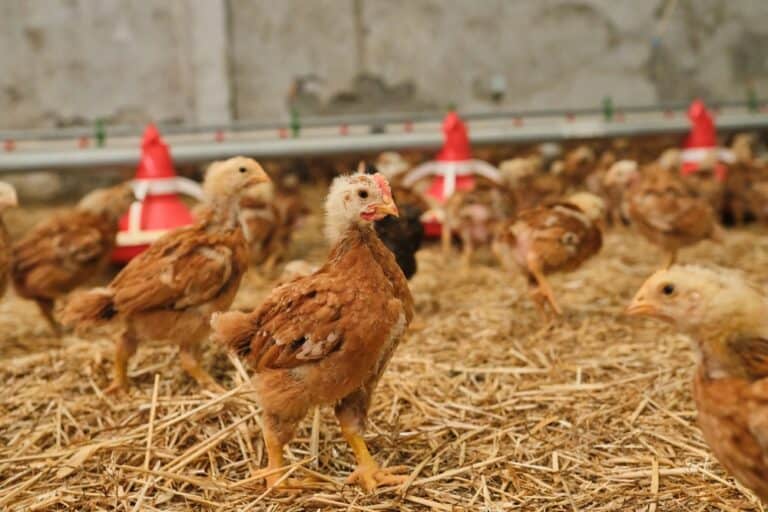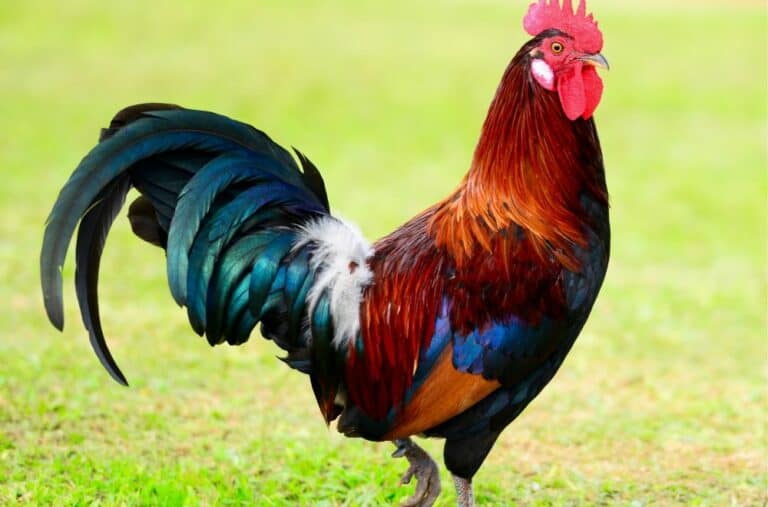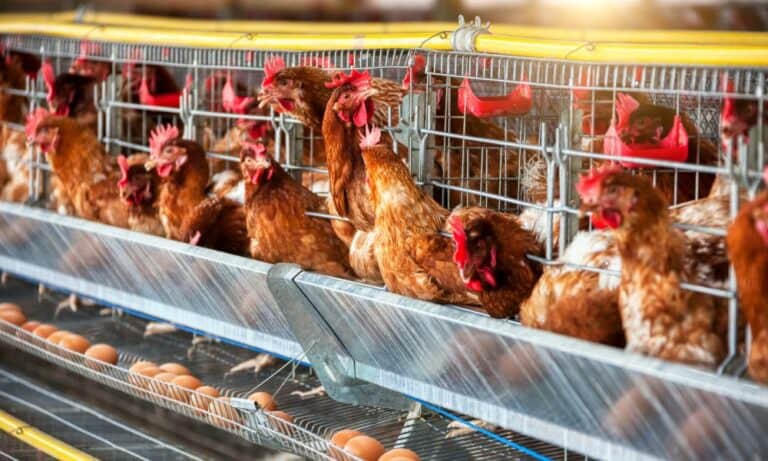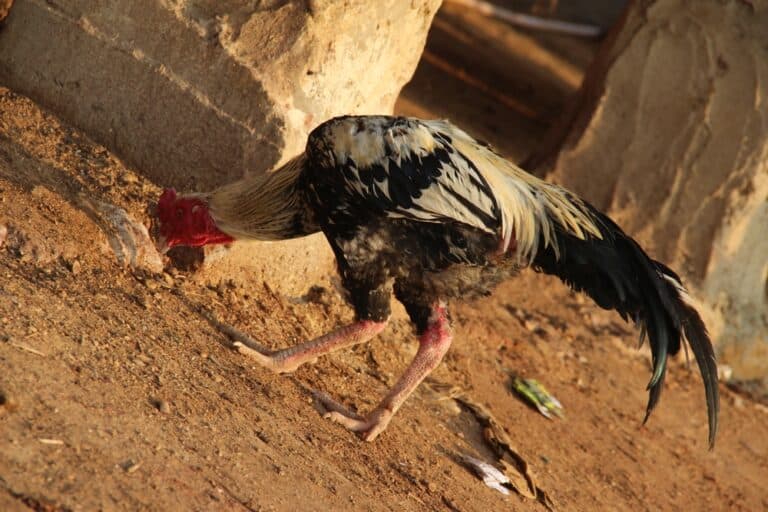The French Bresse chicken breed is one of the most interesting in the world. Not only do they have a fascinating history, but they are also known as one of the most delicious chickens in the world. While good egg layers, they are primarily bred for their meat.
If you’re interested in Bresse chicken, then you’ve come to the right place! In our complete guide to Bresse chicken, we delve into its history, appearance, variations, and other essential details you need to start caring for and raising these chickens. Let’s get started!
The Mysterious History of the Breese Chicken
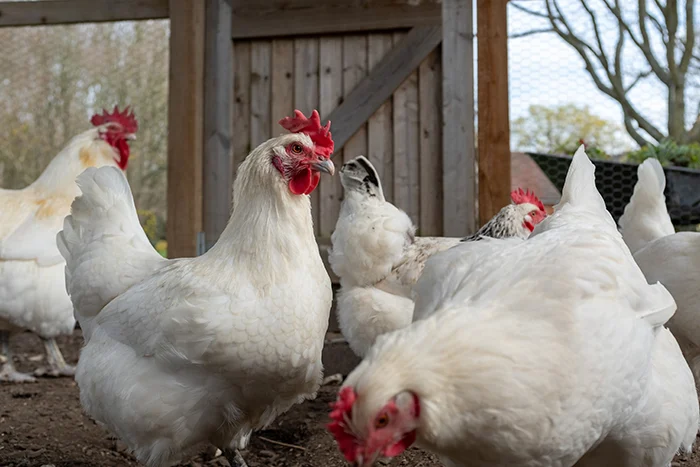
Around 500 years ago, in the Bresse province of Eastern France, the Bresse chicken was first bred and raised. The region, located near the French Alps and the Rhone River, was described as having extensive woodlands and fields which were perfect for chickens.
Interestingly, these chickens were produced by crossbreeding various local French fowl. The Bresse chicken was likely created by chance through crossbreeding, and the original fowl that created them are now long forgotten.
The Bresse chicken meat, also known as Poulet de Bresse in France, is renowned for its distinctive taste. This led to their widespread breeding of them in Eastern France.
The French recognized the value of this breed and selectively bred it to preserve its taste and quality. This cannot be maintained if crossbred with other chicken breeds.
Many were imported to the United States from France in 2011. They referred to it as ‘American Bresse’ due to regulatory requirements, as a true Bresse chicken can only come from that specific region in France.
Bresse Chicken Characteristics
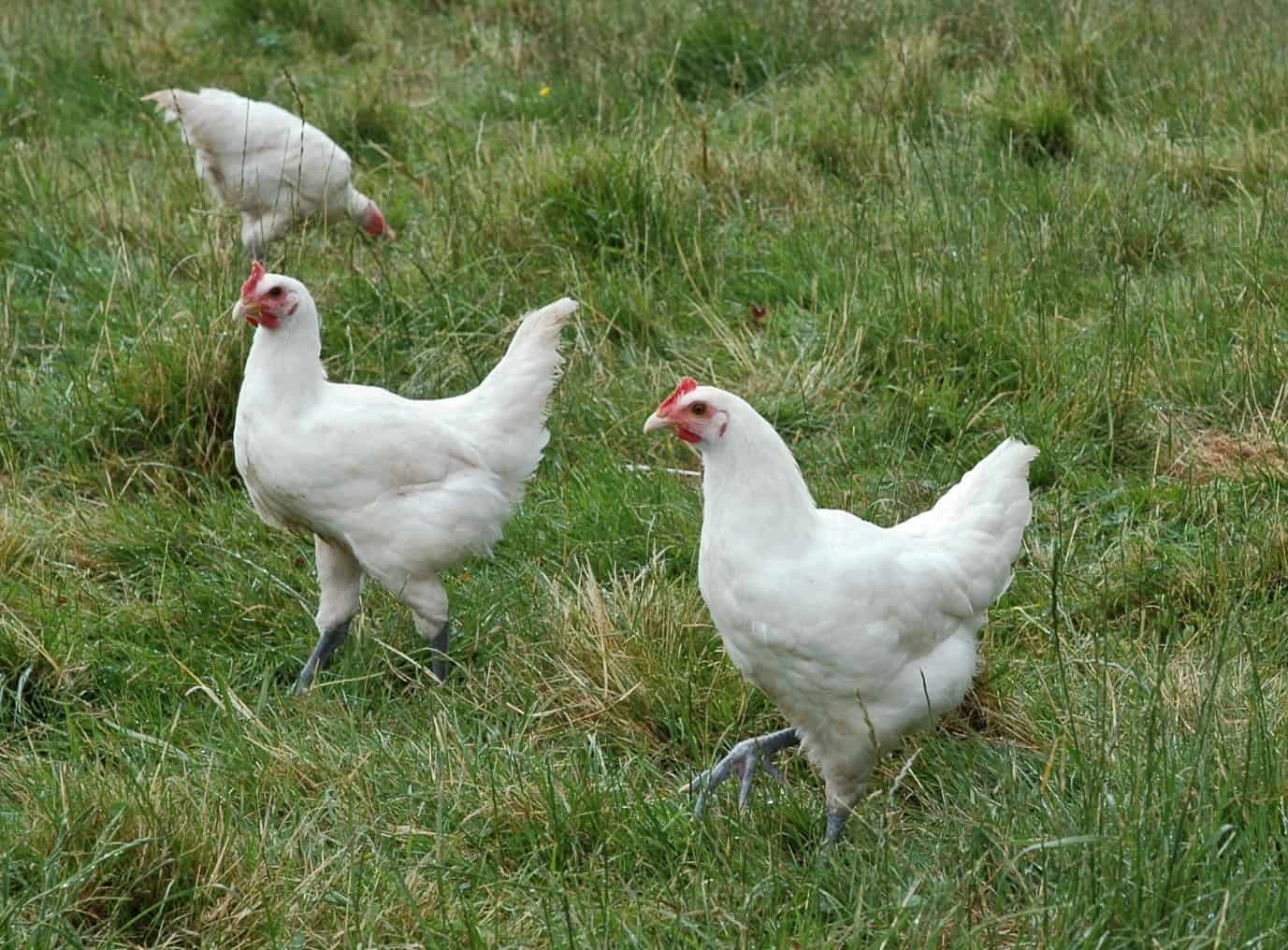
While the history of Bresse chicken is interesting, I’m sure you’ll want to know whether or not this bird is right for you. Let’s take a closer look at its behavior and characteristics.
1. Appearance, Breed Standards, and Varieties
This chicken breed has four varieties, blue, white, black, and gray Breese chickens. The most known and popular Bresse is the white variant since it is claimed to represent the colors of France’s national flag. All Bresse chickens feature these common traits:
- A large and bright red comb
- Legs feature a steel blue tint
- Bright white feathers
2. Size
The Bresse chicken is known for its body size, with the roosters weighing 5.5 to 6.6 lbs., while the hens weigh around 4.5 lbs. Their size and build are ideal for producing high-quality meat and eggs, thanks to their well-developed chests. Additionally, the Bresse chicken has a large head, which is another distinguishing feature of the breed.
3. Temperament
The Bresse chicken is a breed that can exhibit a nervous personality, much like other breeds with similar characteristics. They are not suited to live in confined areas and instead, thrive in large, social flocks where they can forage together.
Bresse chickens prefer less human interaction and do not like to be handled frequently. Despite their nervousness, they have an even temperament and are not aggressive. These chickens are happiest when in large, open pastures with other chickens.
It is important to note that if they are kept in confined spaces for too long, their personalities may be altered. Overall, the Bresse chicken is a social, even-tempered breed.
Bresse Chicken Eggs
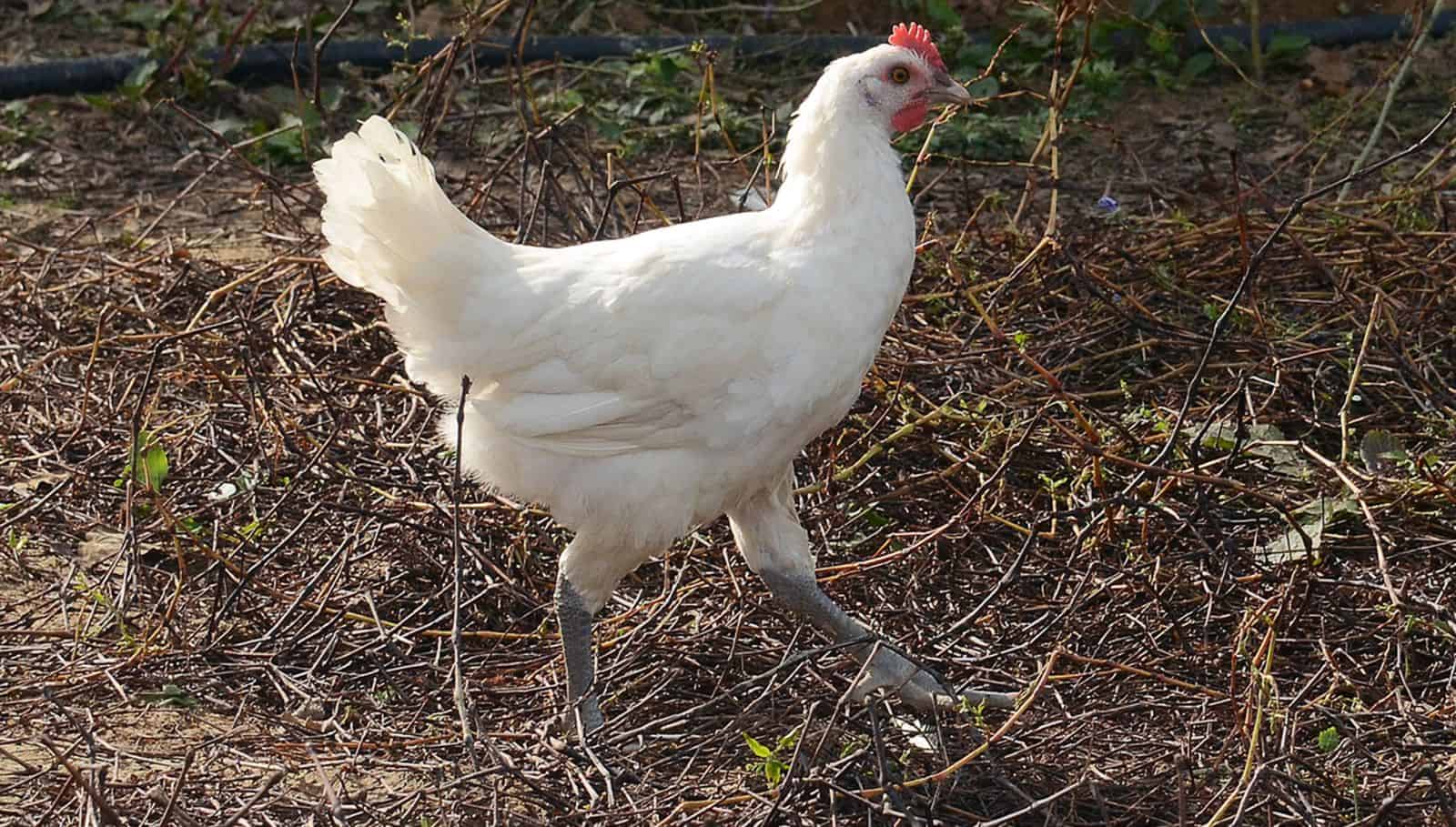
Bresse chickens have a fast maturity rate and are good egg layers. The hens start laying eggs at around 22 weeks. Once they reach adulthood at around 30 weeks, Bresse hens lay around 250 to 300 eggs per year, with an average of five to six eggs per week.
These chickens produce medium-sized eggs that weigh between 50 to 70g. The eggs are usually golden-brown in color but are known for being quite thin and easily breakable. In this respect, they are quite different from other chicken breeds.
Meat Production

The Bresse chicken is widely known due to its exquisite taste, making it the most delicious chicken worldwide. The breed is more famous for its meat than its eggs, which have been in high demand for centuries.
The unique taste of Bresse chicken is a far cry from typical commercial chicken flavors. The original French Bresse chicken is quite expensive and is considered a symbol of luxury and exclusivity. An official French Bresse chicken costs around $50 per chicken.
Bresse chicken breeds are now available in other parts of the world. But despite that, they often do not match the quality and taste of the authentic Bresse breed.
Only Bresse chickens raised in the Bresse region and fed local food can be certified as Bresse chickens. For imported breeds, these chickens cannot be labeled as “Bresse chickens”.
What Makes the Bresse Chicken Special?

The genetic lineage of the Bresse is what causes their unique method of metabolizing their food. This process is the reason why Bresse chicken meat has a different flavor.
The meat-to-bone ratio of this breed is also significantly different from regular chicken meat since Bresse has thin and dainty bones.
The production of Bresse chickens is literally kept under wraps in France. These chickens are so revered that after being processed and plucked, they are wrapped in a special kind of cloth.
They are wrapped carefully with their heads protruding from the bag. This particular bag also applies pressure to the fat to distribute it more evenly, which helps preserve the meat.
The Bresse chickens are produced in a small province in France, where around one million chickens are raised. Only several breeders have the honor of raising this special chicken. To do so, they must adhere to strict guidelines.
Farmers who pass these criteria are provided with certifications. It is to guarantee consumers who are willing to pay for Bresse chickens are sold authentic and high-quality meat.
Health Problems of Bresse Chickens
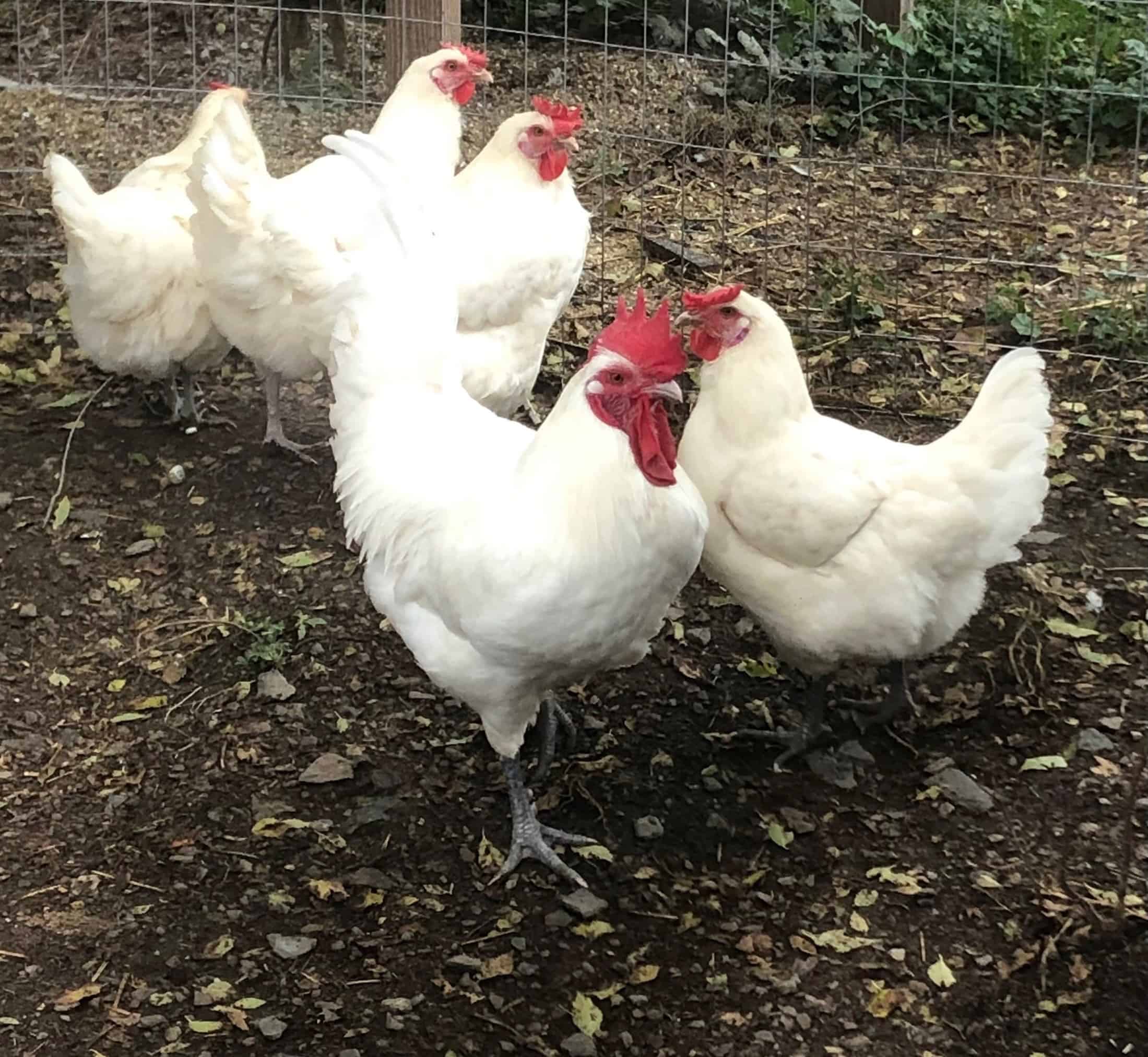
There are no known health problems that are specifically linked to the original Bresse chicken breed. These chickens are only susceptible to common health issues since they are now being imported.
Here are some health conditions you should watch out for:
Botulism – Botulism infects chickens by paralyzing their neck and limbs. This disease affects all domesticated breeds, and it causes quick death. Fortunately, anti-toxins are available to treat this.
Infectious Coryza – Infectious Coryza is a dangerous bacterial disease that can affect a chicken’s respiratory system. The first symptoms of this disease include inflammation under the eyes, nasal discharge, and sneezing.
Vaccines cannot stop this disease. Unfortunately, chickens that contract Infectious Coryza will need to be euthanized to prevent the disease from spreading to the rest of the flock.
Since these diseases affect all chicken breeds, taking precautions is needed to keep the Bresse chicken healthy. You will need to provide high-standard care since new locations bring new diseases and health conditions.
Four Reasons Why You Should Raise Bresse Chickens
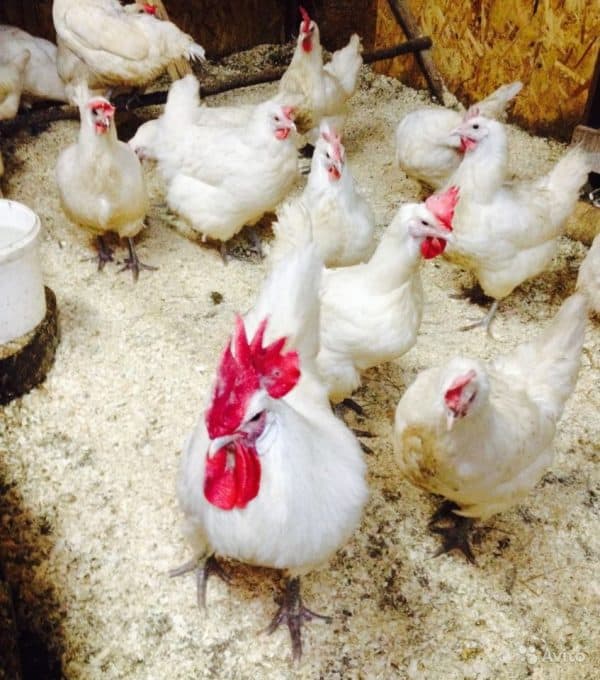
Are you thinking of raising Bresse chickens? Here are some reasons why you should do so:
- Dual-Purpose – Bresse chickens are excellent meat producers. As mentioned, they are known for their distinct and special taste. But aside from being delicious meat, the Bresse are excellent egg layers and can produce over 200 eggs each year. If you have a smaller backyard coop, raising chickens that have a dual purpose is ideal.
- Profitable – When breeding chickens for profit, heritage varieties like the Bresse will earn you a higher price for day-old chicks and fertile hatching eggs.
- Excellent Foragers – Bresse chickens are great at foraging for their supper, and it is part of their rearing process in France. Their feed is restricted to encourage them to eat grass and hunt for insects, bugs, or snails.
- Can Tolerate Cold Temperatures – When raising Bresse chickens, you will not need to worry if they will survive in harsh cold weather conditions. They can tolerate low temperatures without pampering.
Bresse Chicken – FAQs
1. What are Bresse chickens fed with?
One of the most unique facts about Bresse chickens is that they are fed with milk. Aside from that, they are allowed to forage for food and their diet is supplemented with high-quality corn.
2. How much do Bresse chickens cost?
Bresse chickens are not only expensive but also hard to find. A teenage Bresse will cost at least $30. To get them as a chick usually cost around $10 and hatching eggs about $5. American Bresse chickens will often be significantly cheaper and easier to buy.
3. What is special about Bresse chicken?
Bresse chickens are special for two reasons. Firstly, they are known by many as the tastiest chicken in the world. Secondly, authentic Bresse chickens are only those which have been born and raised in that specific region in France.
4. Why is Bresse chicken so expensive?
Quality and rarity. True Bresse needs to be imported from France. However, you can buy Bresse bred outside of France but these will be given slightly different names such as American Bresse or Bresse Gauloise.
5. Are Bresse chickens cold hardy?
The region of Bresse is in the middle of France and therefore can have hot summers and frigid winter days. Due to this, Bresse chickens can thrive in a wide range of temperatures.
6. Are Bresse chickens friendly?
Most people find Bresse to be both calm and friendly. They are easy to keep and are ideal for backyard coops if you can afford the high initial cost.
Summary
The Bresse is one of the world’s renowned chicken breeds for a few different reasons. These chickens are known for the distinct flavor of their meat, and they are also good egg layers.
While true Bresse breeds are expensive and hard to find, you should be able to easily buy related breeds such as American Bresse to add to your backyard flock.

